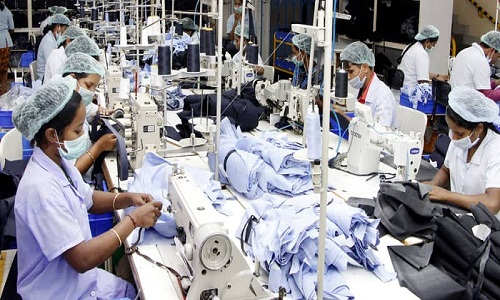"Apparel sector has the potential to create highest jobs that any other sector can employ. For example, RIL reports $110 billion in assets and 250,000 employees across its various ventures. It employs five workers for each $2.2 million in assets. Shahi Exports, India’s largest apparel exporter, has assets worth $185 million and employs 106,000 workers in its apparel factories. It employs 1,260 workers for every $2.2 million in assets. In the same investment, Shahi Exports creates 252 times the jobs that RIL does. This is the power of textile industry we are talking about."

Apparel sector has the potential to create highest jobs that any other sector can employ. For example, RIL reports $110 billion in assets and 250,000 employees across its various ventures. It employs five workers for each $2.2 million in assets. Shahi Exports, India’s largest apparel exporter, has assets worth $185 million and employs 106,000 workers in its apparel factories. It employs 1,260 workers for every $2.2 million in assets. In the same investment, Shahi Exports creates 252 times the jobs that RIL does. This is the power of textile industry we are talking about.

Talking about the business potential, in 2015, the apparel export market was $465 billion. India exported $18 billion compared to China’s $175 billion. High wages are now forcing China to withdraw from this market. From $187 billion in 2014, its apparel exports have fallen to $158 billion in 2016. India should now just focus on taking on China’s place to gain major share.
What is desired?
The reason for stagnant performance is partly due to the policies which reserved apparel for production by small-scale enterprises. These enterprises were too small and their product quality too low to succeed big in the export markets. Since 1973, India’s investment policy confined large firms and big industrialists to investing exclusively in a set of listed ‘core’ industries, which were all highly capital intensive. Owing to this, big industrialists started looking at apparels sector as a not so profitable proposition. Though post liberalization in 1991, small-scale industries reservation was withdrawn, investment in apparel still remained off radar.
The need is to encourage global apparel firms exiting China to relocate in India, instead of Bangladesh and Vietnam. These firms bring in technology and management know-how to operate on large scale having access to global markets. The country needs to create greater labour market flexibilities. There has to be a better balance between the interests of those who already have formal sector jobs, and those who seek them. Firms choose to stay small, operate informally and, thus, escape costly labour regulations.
Exports, especially in the apparel industry, have extremely tight just-in-time delivery schedules. This necessitates the rapid movement of imported inputs into the country and of export products out of the country. In order to achieve the same, trade facilitation needs to be given emphasis. Turnaround time of ships at ports needs to be brought down to a few hours as in Hong Kong and Singapore. Coastal Employment Zones (CEZs) offer a convenient avenue to bringing about these changes expeditiously within limited geographical areas.
To make the industry more competitive, indirect taxes paid by apparel exporters, including those on products outside the goods and services tax (GST) net, such as petrol, be expeditiously reimbursed in full. All competing countries follow this practice and the World Trade Organisation rules permit it as well. The exchange rate has been an extremely sensitive concern for apparel exporters due to low profit margins on which they operate. Foreign investment and remittance inflows, which chase rupees, make them expensive. The Reserve Bank of India (RBI) needs to manage foreign exchange inflows such that the rupee does not appreciate unduly.












